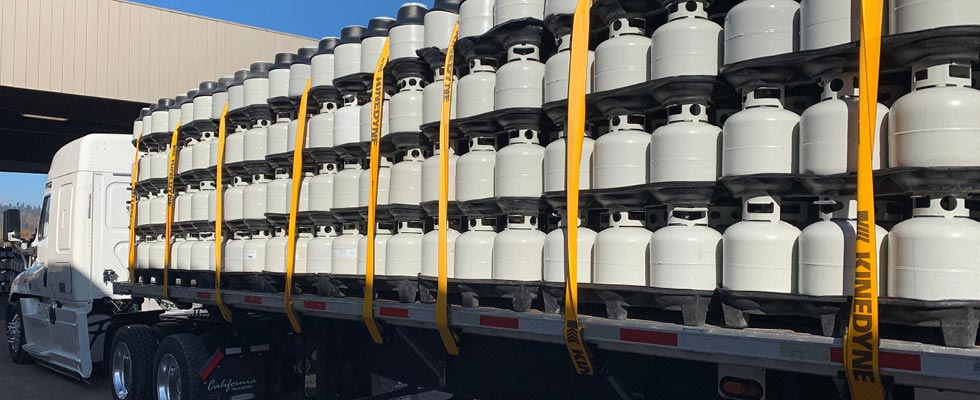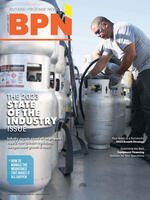
When a United States Department of Transportation (DOT) cylinder is manufactured, the cylinder manufacturing company must go through an extensive application process. Applicants seeking approval to requalify, repair, rebuild, reheat or manufacture DOT or UN International Organization for Standardization (ISO) cylinders in accordance with the 49 Code of Federal Regulations (CFR) must have an independent inspection agency inspect their facility prior to requesting an approval from the Approvals Branch within the U.S. DOT.
Rules and regulations are normal in the 20-pound cylinder industry. Today, federal regulations permit a 1% tolerance between the actual tare weight (TW) and the stamped tare weight. “The 49 CFR 178.51 4BA requires the manufacturer of cylinders to retain test reports verifying the cylinder tare weight accuracy to a tolerance of 1%.”
Examples of regulatory requirements:
- Weight and volumetric capacity
- Material dimensions and strength
- Soundness and strength of welds
- Corrosion resistance
- Resilience to impact
- Redundant leak inspections
The propane cylinder is good for public use for years and can be refilled by reading the tare weight and setting scale to fill. This is what is trained: read the tare weight and fill. As the cylinder is used throughout the years, corrosion or being repainted or blasted during the life of the cylinder can cause changes to the tare weight.
The National Conference on Weights and Measures, in partnership and cooperation with the National Institution of Standards Technology (NIST) Office of Weights and Measures and the Weights and Measures Divisions of select U.S. states, initiated a 2022 national survey on 20-pound liquefied petroleum gas (LPG, or propane) cylinders that represents the current marketplace practice of manufacturing, filling, selling and exchanging 20-pound LPG cylinders. MAKEEN Energy participated in Phase 1 of this survey. There were three phases from February 2022 to April 2022.
Phase 1: Point of Pack
The purpose of this phase was to determine the accuracy of the stamped tare weight compared to the actual tare weight of new and used cylinders by a determination of data collected. We provided exchange cylinders that are used for shipment and sale to retail exchange locations. We staged cylinders as requested by the testers.
Phase 2: Direct Sale Refilling Stations
This phase collected data at direct sale propane refilling stations and documented the method of sale, price posting practices and the filling procedures.
Phase 3: Exchange Locations
This phase determined the net weight compliance of 20-pound propane cylinders and assessed how much product is left behind by customers when performing a cylinder exchange or cylinder return.
There has been a significant increase in household and recreational use of LPG over several years. Exchange sites are now located at most retail locations — even home delivery of the 20-pound LPG cylinders and 24-hour automated vending machines. The 20-pound LPG cylinder is the most common size in exchange programs. It is called a 20-pound cylinder because that is the total weight of propane it will safely hold. However, most 20-pound cylinders are filled and labeled to a net weight of 15 pounds. The total weight of a full cylinder, which includes the weight of the propane and the weight of the cylinder itself, can be close to 40 pounds.
The method of sale, or how LPG must be sold, can be found in NIST Handbook 130 (HB 130), Uniform Laws and Regulations in the Areas of Legal Metrology and Fuel Quality, Section 2.21, Liquefied Petroleum Gas. The legal requirement for LPG sold in 20-pound cylinders is by the weight in either kilogram or pound. LPG in general can be sold by weight, liquid measure or gas vapor.
Refillers (when the 20-pound cylinder is taken to a refill location) of LPG can fill by liquid by the liter or liquid by the gallon. Even though it is filled and sold by volume, federal law still requires that the seller verify the quantity by weight. This is done for safety reasons, primarily to prevent overfilling. In the survey, it was determined cylinders are overfilled. This is a safety concern that needs to be addressed.
Stamped or stenciled tare weight is for safety purposes; the tare weight should be legibly and permanently stamped or stenciled on the cylinder. All tare weight values must be preceded by the letters “TW” or the words “tare weight.” The tare weight must include the weight of the cylinder (including paint), valve and other permanent attachments.
Though not included as part of the stamped or stenciled tare weight, the weight of the label and the weight of the protective cap must be included in the total tare weight when verifying the net contents.
Currently the stamped or stenciled tare is used to determine the net contents of the cylinder, the allowable difference between the actual tare weight and the stamped or stenciled tare weight, or the tare weight on a tag attached to the cylinder for a new or used cylinder, which must be within the following tolerances:
- ± 1/2% for tare weights of 9 kilograms (20 pounds) or less
- ± 1/4% for tare weights of more than 9 kilograms (20 pounds)
The DOT federal regulations went into effect and became enforceable on Dec. 28, 2022. The new requirements described below would increase the current tolerances found in NIST HB 130, Uniform Laws and Regulations in the Areas of Legal Metrology and Fuel Quality. This new allowable difference or tolerance between the actual tare weight and the stamped tare weight shall be:
- Minus 3% or plus 1% for a cylinder that weighs 11.34 kilograms (25 pounds)
- Minus 2% or plus 1% for a cylinder that weighs more than 11.34 kilograms (25 pounds)
Currently in NIST HB 130 for cylinders that weigh 20 pounds or less, the plus or minus tare weight is ½%. Under the new DOT regulation, for cylinders that weigh 25 pounds or less, the minus tare weight tolerance will change to 3% and the plus tare weight will change to 1%.
For cylinders that weigh more than 25 pounds, it gets even less stringent under the new DOT regulations. The minus tare weight tolerance will change to 2% and the plus tare weight will change to 1%.
The labeling requirements of a cylinder is considered a package under the NIST HB 130, Uniform Packaging and Labeling Regulation (UPLR). Exchange cabinets and vending machines must also meet the requirements of the UPLR.
The National Fire Protection Association (NFPA) is a nonprofit organization that publishes a Liquefied Petroleum Gas Code. All states adopt this code as their law. Most state and local fire marshals have also adopted this code as their law. NFPA also provides valuable information on ensuring safety in the handling of LPG.
In the cylinder exchange business, it is considered a convenience to best manage personal time, equating to value. When getting a cylinder from a cylinder exchange company, you are getting a cylinder that was processed by trained workers who handle hundreds of cylinders a day.
Effects on the Future
The report from NIST has caused me to think through the whole process, which I feel was the goal of the survey — therefore a success. Now, leaders in the industry have the data to make the best decisions. Are there still questions with this data? Yes. Are there more conversations needed for next steps? Yes.
So how will this less stringent tolerance affect the industry? The answer is uncertain, but we all want businesses and people to be safe and to be treated fairly.


